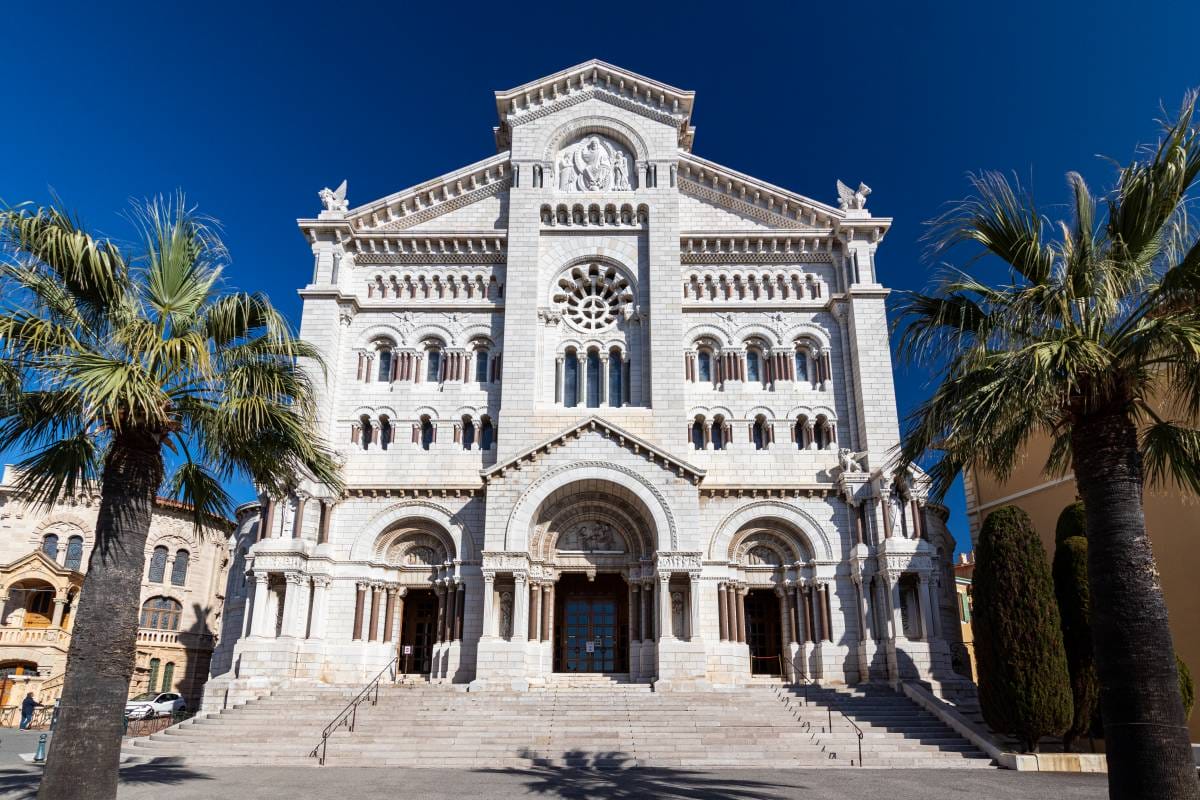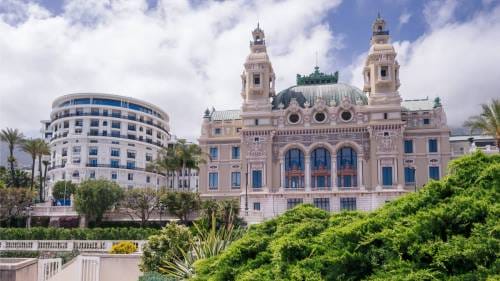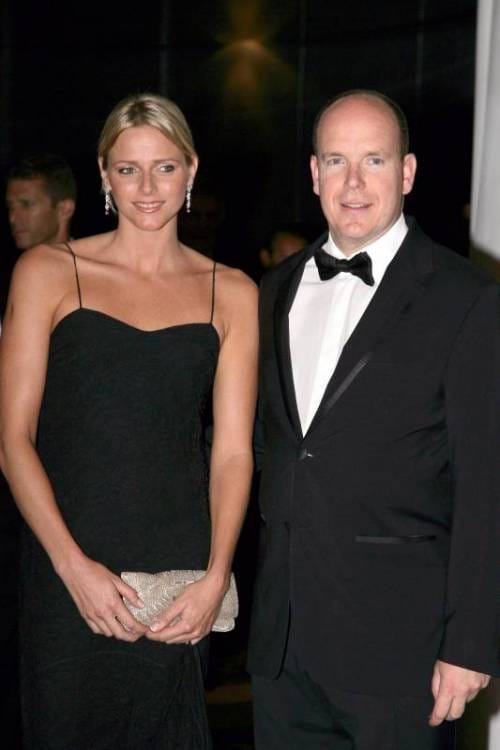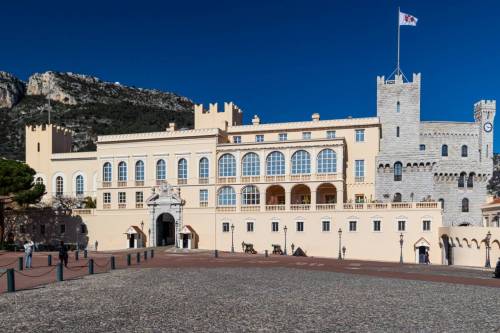The Cathedral of Our Lady Immaculate, commonly known as Saint Nicholas Cathedral, stands as a testament to Monaco’s rich religious and cultural heritage. Situated on the site of a 13th-century church dedicated to Saint Nicholas, the current edifice’s cornerstone was laid on January 6, 1875, marking the beginning of a significant architectural endeavour.
A touching ceremony
All was recorded for posterity in the Journal de Monaco #862 January 15th, 1875, with the words: “Tomorrow, Wednesday, the blessing and laying of the first stone of the new cathedral will be solemnly carried out. Preparations for the ceremony are actively continuing under the direction of Mr. Lenormand, architect of the monument, and the Public Works Engineers of the Principality. All the clergy, the judiciary, the civil and military authorities, the congregations and the schools will attend this procession, the brilliance of which will reflect the dual character of a religious and national event. Places will be reserved for the ladies. The procession will meet at half past one at the Church of the Visitation.”
And then in #863 of the Journal de Monaco the event itself was reported: “The imposing ceremony of the blessing of the first stone of the new Cathedral took place last Wednesday. A splendid sun, a spring temperature favoured this celebration whose religious and official pomps were accomplished in the midst of the concourse of the entire population and a large crowd of foreigners.”

In the first stone of the Cathedral were placed, according to custom and tradition, medals bearing the effigy of the Prince, a copy written on parchment of the minutes of the ceremony as well as a commemorative plaque bearing in Latin fine words about Prince Charles III.
The present day Cathedral of Monaco is a child of the renaissance of the Principality late in the 19th century, when Monaco added riches to its independence. Today’s Cathedral is a unique magnet for visitors whose numbers would astound. We are used to the flow of the crowds drawn to visit the Oceanographic Museum close-by — in some years reaching up to a million. Did you know that up to almost five times that number pay their respects to the Cathedral?
True to its past as the centre of the Monegasque community and the resting place of Grimaldi rulers; true to its present as an important part of the community and as the resting place of Princess Grace and Prince Rainier III who married there in 1956.
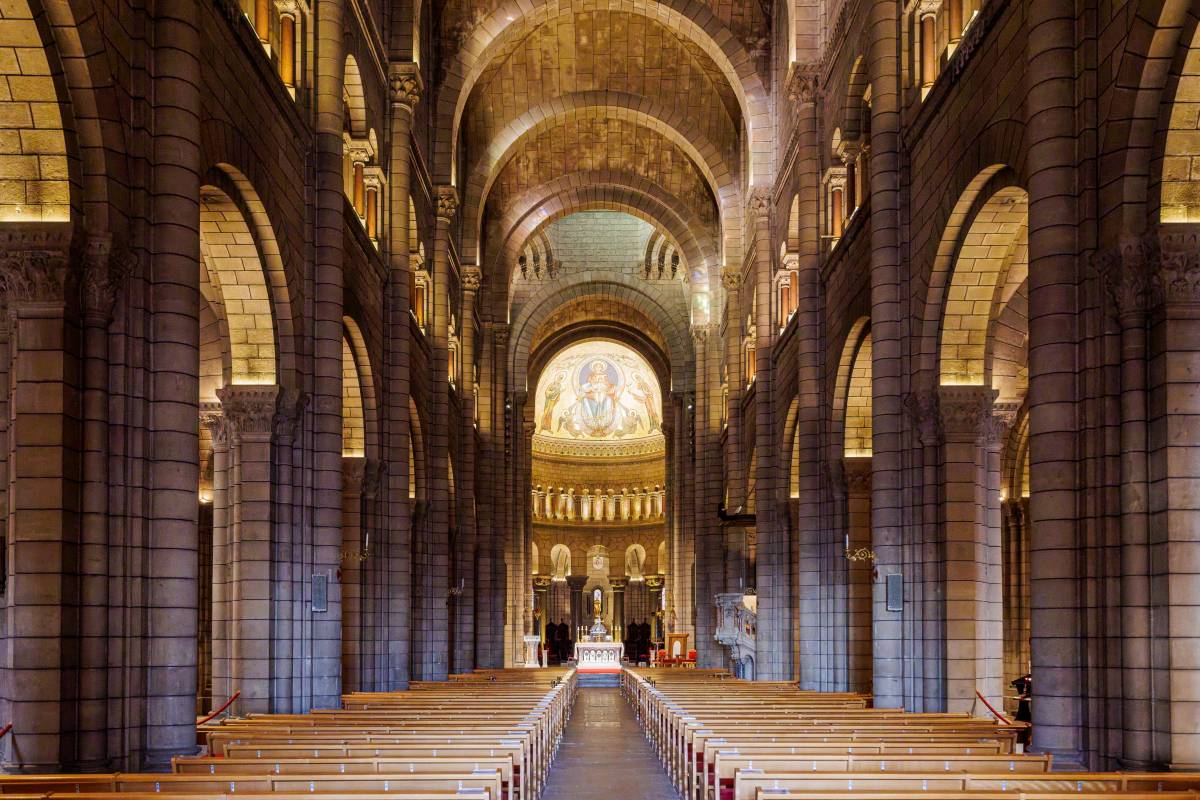
Historical Background
The Cathedral owes its history to permission granted by Pope Innocent IV in 1247 to build a Christian chapel situated at the Castle of Monaco. The Pope’s letter granting original permission to build was issued on the day dedicated to Saint Nicholas of the ancient Greek city of Myra. So in 1322, it was decided to dedicate this first church to Saint Nicholas who is the patron saint of seafarers in sync with Monaco’s major seafaring past. Construction of the church commenced in 1252 and over time the edifice was enlarged and increasingly beautified.
This original 13th-century chapel, dedicated to Saint Nicholas, served the spiritual needs of Monaco’s residents for centuries. By the 19th century, the need for a larger and more modern place of worship became evident, leading to the demolition of the old church in 1874, leaving only some remnants and a bell. In its place was built a new magnificent place of worship, worthy of its role as a Cathedral. Its location has remained exactly where the first chapel of Monaco was built. In 1875 construction commenced on the new cathedral, designed in the Roman-Byzantine style by architect Charles Lenormand. The building process spanned several decades, with the cathedral being completed in 1903 and consecrated on June 11, 1911.
Architectural Features
The genius of Monaco’s Cathedral is in its blend of medieval history with the finest quality neo-architecture, both in the splendid interior and reflected in its external statuesque profile.
The cathedral showcases a Roman-Byzantine architectural style, characterized by its impressive façade constructed from white Carrara marble. Inside, visitors can admire the 16th-century altarpiece of Saint Nicholas, crafted by the renowned Niçois painter Louis Bréa, which was preserved from the original church.
The interior also features a grand organ, inaugurated in 1976, enhancing the cathedral’s liturgical ceremonies and concerts.
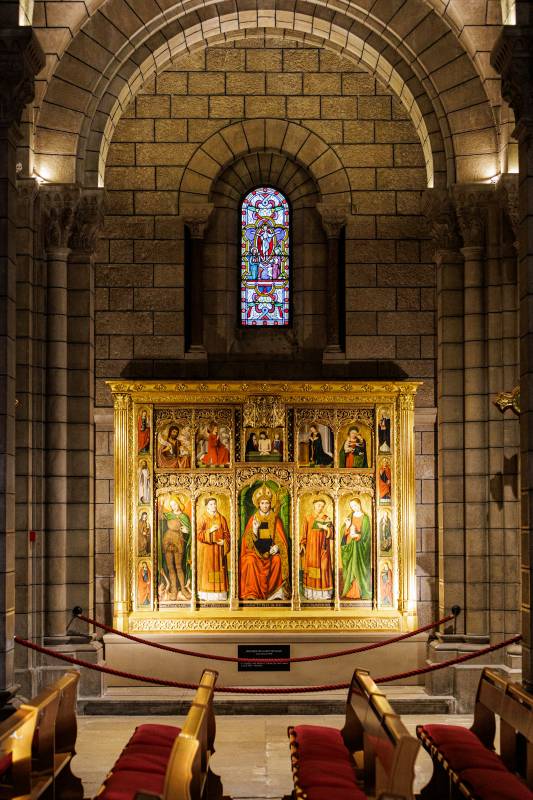
The Spirit of the Original Church Remains
The spirit of the old Saint Nicholas chapel has been authentically preserved by the inheritance from it of important pieces of Renaissance art. Especially valued are treasured altar-pieces: retable paintings by Ludovico Brea, a famous Renaissance painter completed around 1500 which shows Mary Magdalene and Saint John. The donor for the painting, Antoine Teste is at his feet as well as Saint Nicholas, Saint Stephen, Saint Lawrence and the archangel Michael evaluating souls. Another important treasure is “Pieta” by François Bréa (nephew of Louis Bréa), painted sometime between 1500 and 1505.
From the old Chapel is preserved also the Chapel of Blessed Sacrament with a beautiful altar constructed out of gilded walnut in 1667 in Spanish Renaissance style. This chapel functions as a funeral chapel for bishops and archbishops of Monaco.
Sculptures in the facade were carved by Henri Louis Cordier in 1883–1901 who applied his craft to also making sculptures for the casino in Monte-Carlo. Strikingly beautiful is the Neo-Byzantine mosaic on the apse of the Cathedral which complements the 183 restored stained glass windows.
Praise is heaped on the unusually high quality of the finishes everywhere; such painstaking attention to the smallest detail.
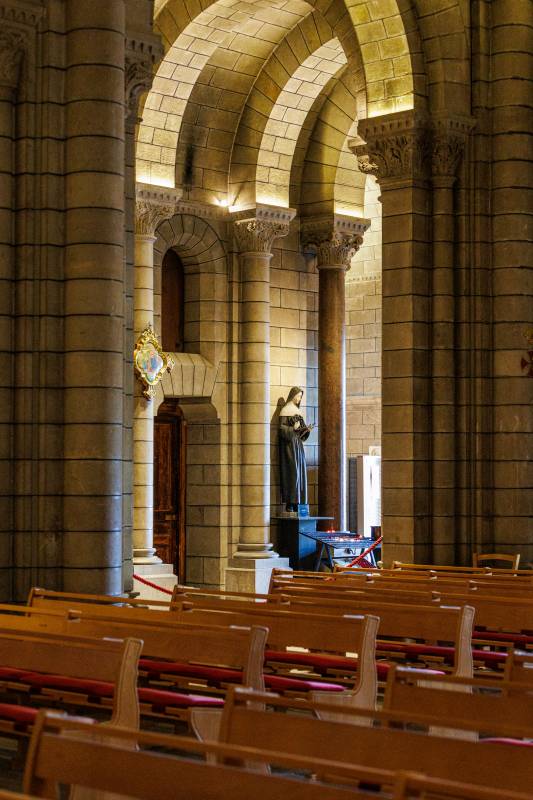
Role as Monaco’s Main Cathedral
As a place of worship in Monaco, the cathedral hosts significant religious events, including pontifical services on major religious festivals such as the Feast of Sainte Dévote on January 27 and Monaco’s National Day on November 19. From September through June, the Cathedral Choir School performs during Sunday Mass, contributing to the rich musical tradition of the services.
Beyond its religious functions, Saint Nicholas Cathedral is a symbol of Monaco’s architectural beauty. It has witnessed numerous significant events, including royal weddings and state ceremonies, embedding it deeply in the cultural and social fabric of the Principality.
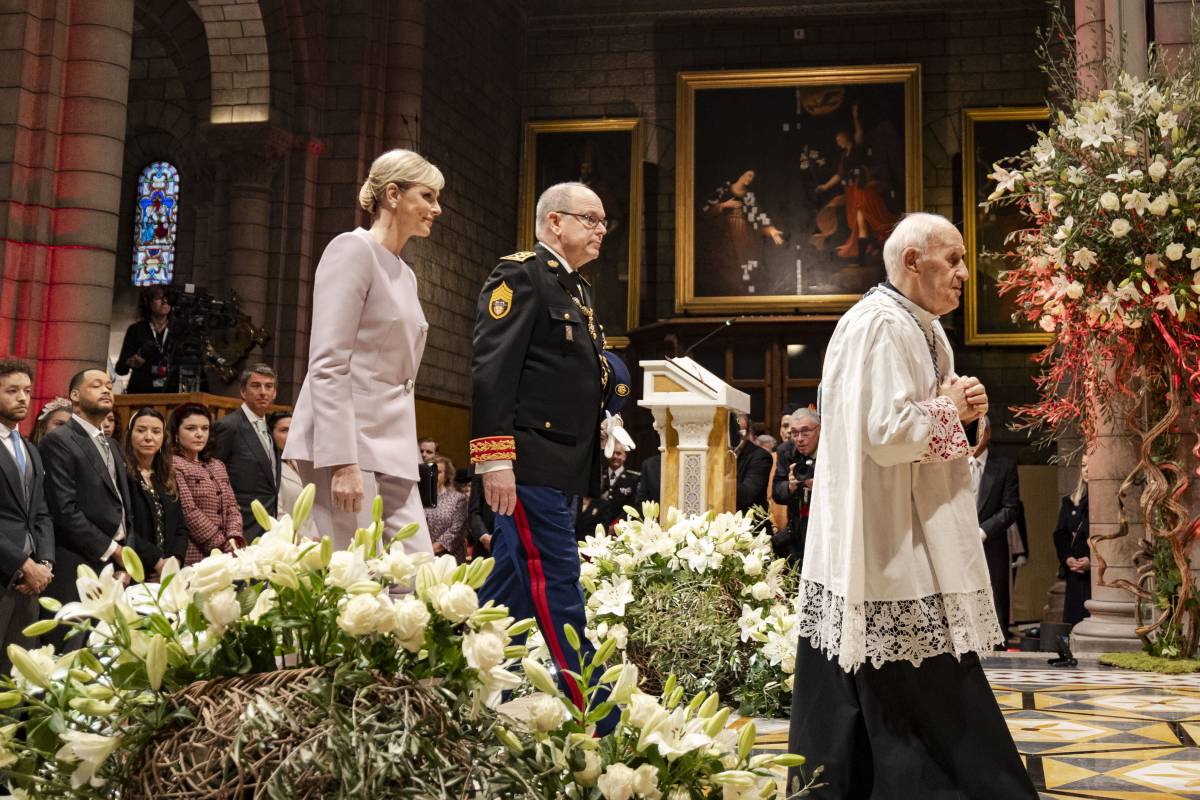
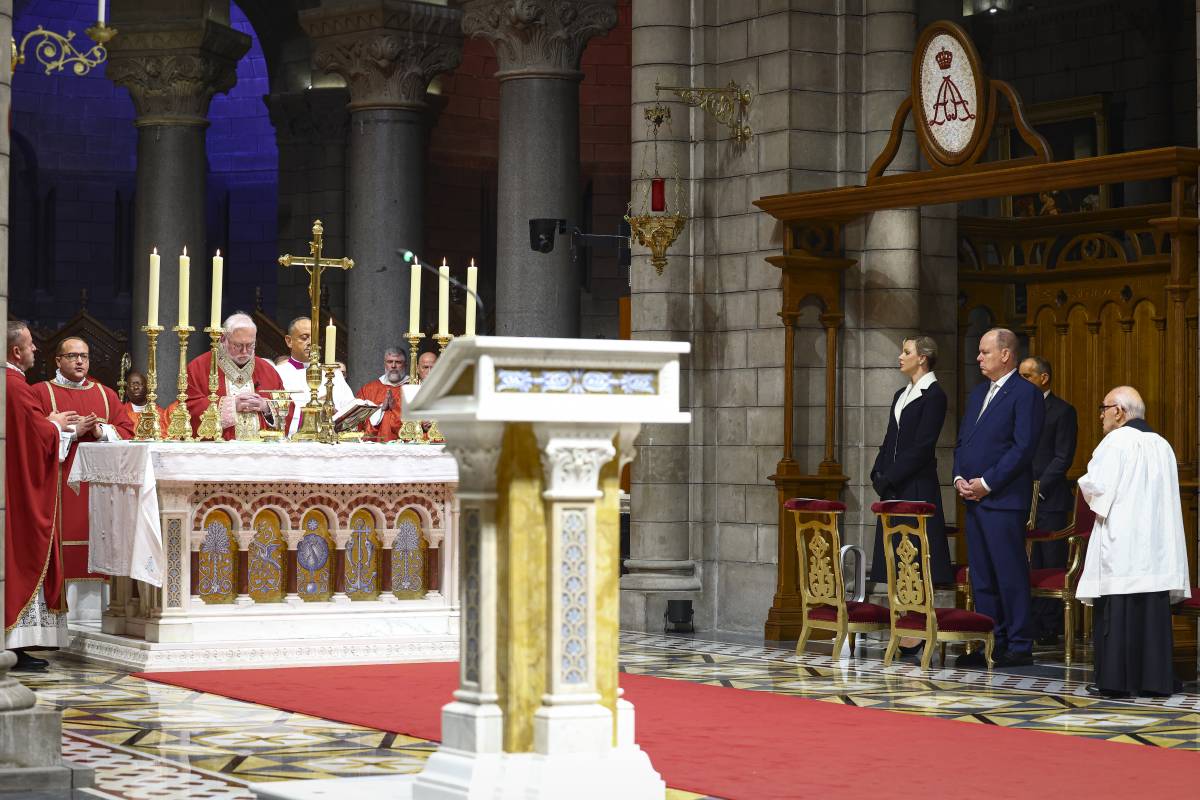
As of December 26, 2024, the cathedral marks 150 years since the commencement of its construction, standing as a monument to Monaco’s enduring heritage and the spiritual heart of the nation.
Visit and walk around this piece of art. Breathe in the history from 1297 and all the communities that have prayed in it. Look to the lighted heavens for the organ and listen to its music echoing the spirit of Grace; take in the Byzantine mosaics. Explore the many richly decorated alcoves with saints and historic figures. Imagine the wedding of the century between Prince Rainier and Princess Grace and then respectfully pray at their resting place among the giants of Monagasque history. To be visited and treasured the venerable Cathedral de Notre-Dame-Immaculée of Monaco, also lovingly known as Saint Nicholas Cathedral.
Royal Heritage in Saint Nicholas Cathedral
– The Cathedral houses the remains of Saint Devota, the Patron Saint of Monaco. According to tradition, her relics were brought to Monaco in 1070 AD, and they now rest in the cathedral.
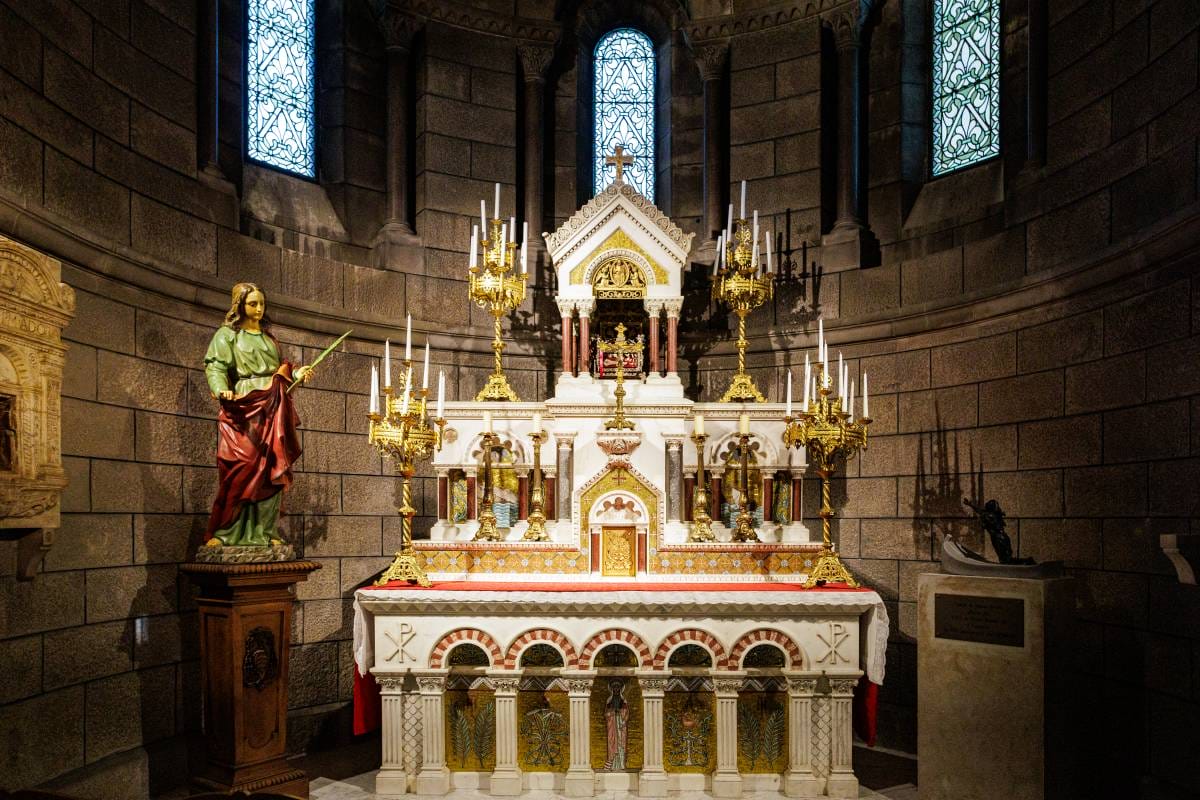
– The Cathedral is where Albert II was invested Prince in 2005.
– Monaco’s little royal twins Gabriella Thérèse Marie and Hereditary Prince Jacques Honoré Rainier Grimaldi were radiant in white as their christening was captured for the world at the Cathedral de Monaco. Not to mention the christenings themselves of Prince Albert II, Princess Caroline and Princess Stephanie.
– Monaco’s Saint Nicholas Cathedral has hosted several significant royal weddings, making it a central venue for the Principality’s most celebrated ceremonies. Notable among these is of course the wedding of Prince Rainier III and Grace Kelly (April 19, 1956).
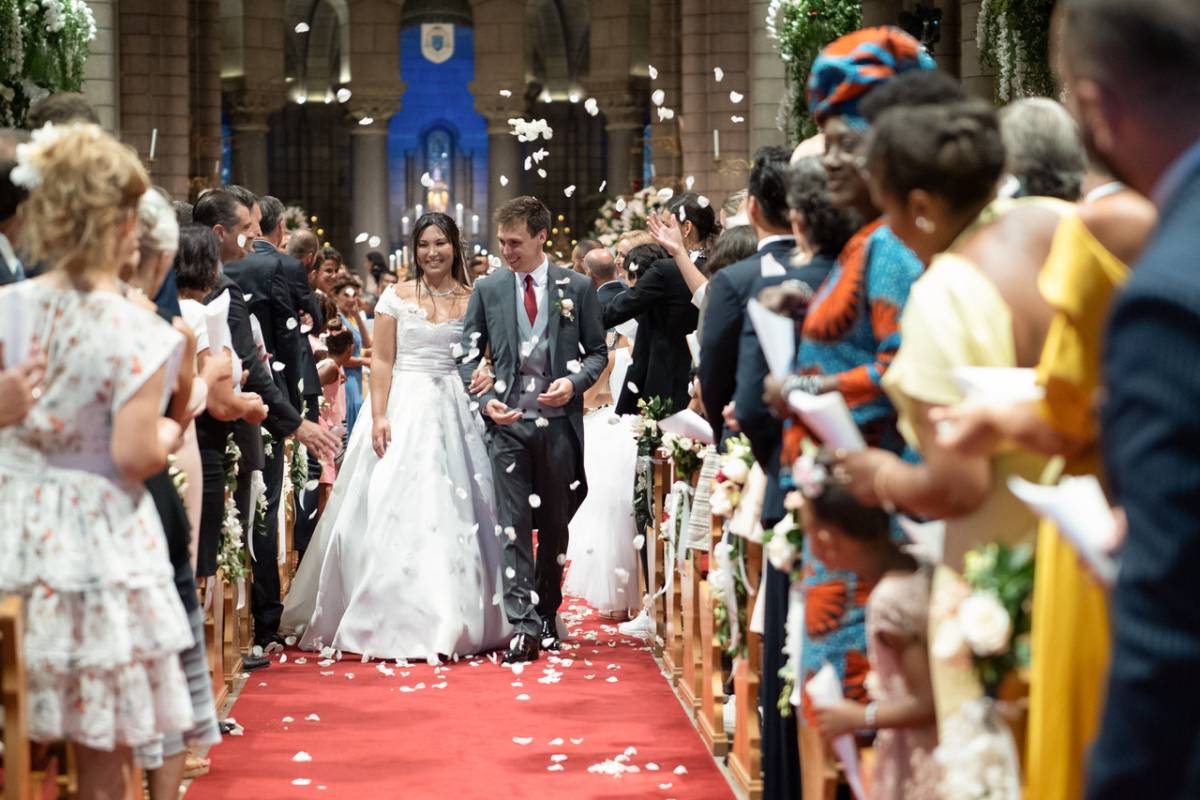
– The Cathedral serves as the final resting place for many members of the Grimaldi family, including notable princes and princesses. Among those interred there are: Prince Rainier III (bur. 2005), Princess Grace of Monaco (bur. 1982), Prince Louis II (bur. 1949), Prince Albert I (bur. 1922). Other members of the Grimaldi family from earlier generations are also buried in the Cathedral, continuing its tradition as the family’s primary mausoleum. Visitors often come to pay respects, particularly to Prince Rainier III and Princess Grace, whose legacy holds deep cultural and emotional significance for Monaco.
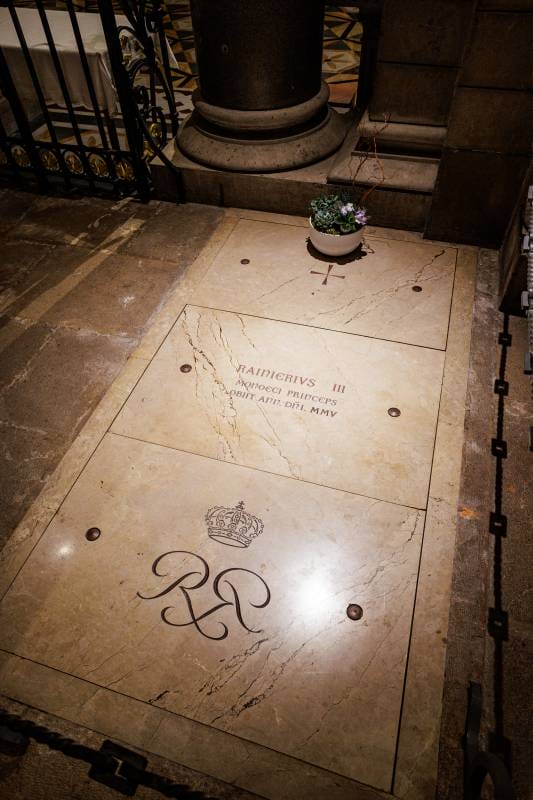
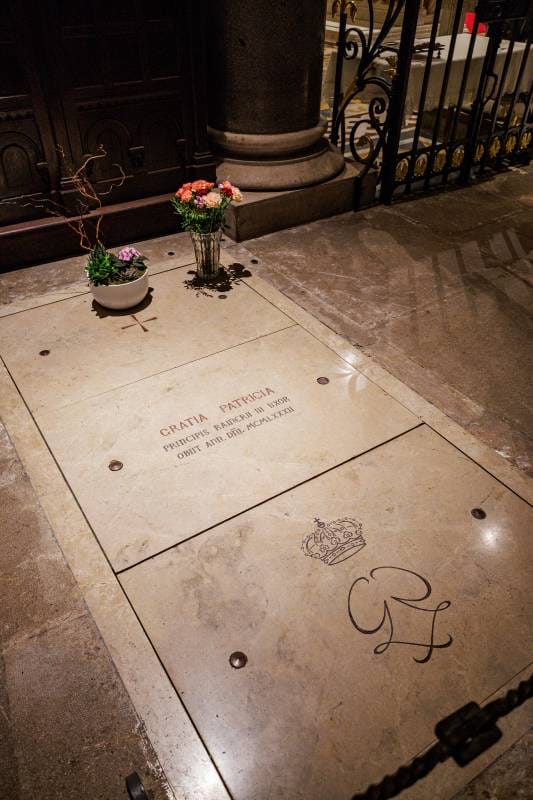
From the Old Church to the Chapelle de la Visitation and back to the new Cathedral
On May 15th 1873 before the destruction of the old church the remains of all Princes and Princesses buried there were solemnly transported to the Chapelle de la Visitation. A beautiful Latin inscription was tied to the Chapelle. Here is its translation in English:
“Come, O dear Remains of the Princes of Monaco!
Mary, who is indebted to you for this sacred asylum, in her turn offers you hospitality.
Come and rest here in the peace of the Lord, while waiting for the munificence of the August Charles III to have prepared for you a permanent and worthy dwelling, in the sumptuous temple that he will build in favour of this pious population.”
The First Chaplain performed the solemn absolution and sprinkled holy water on the illustrious dead. H.S.H. the Hereditary Prince came in turn to pay a final homage to the August remains of His ancestors.
On 25 April 1885 the remains of all those Princes plus Princess Caroline (aka Princesse-Mère) who died in 1879 during the Cathedral construction were transported back to the new cathedral. All was recorded in the Journal de Monaco in 1885: “Last Saturday, April 25, the mortal remains of the Princes and Princesses, which had been since May 15, 1873 in a temporary vault in the chapel of the Visitation, and previously in the parish church of Saint-Nicolas, now demolished, were transferred to the crypt of the new Cathedral.”
Here are just some of the names, with the date of their death, of some the principal members of the Sovereign Family who, from then on, would rest in their new tomb:
Jean II (1505), Claudine, his mother (1515), Lucien I (1523) and Augustin, Bishop of Grasse (1532), his brothers;
Honoré I (1581), his sons Charles II (1589) and Hercule I (1604), his grandson Honoré II (1662);
Antoine I (1731), Louise-Hippolyte, his daughter (1731), Antoine-Charles, Chevalier de Grimaldi, his son (1784) ;
Honoré IV (1819), Honoré V (1841), Antoinette, Countess de Mérode, wife of H.S.H. Prince Charles III, (1864), Caroline, widow of Prince Florestan I (1879).
Arriving at the Cathedral, the coffins were lowered into the crypt of the Princes’ Chapel,
and Monseigneur, the Bishop gave absolution in the presence of H.S.H. Monseigneur the Hereditary Prince, accompanied by M. Captain Plati.
Within a span of 10 years the cathedral had almost been built in general though it was completely finished 18 years later. Later the remains of Prince Florestan I, father of Charles III, and Louise d’Aumont de Mazarin, grandmother of Charles III, were transported to Monaco too.
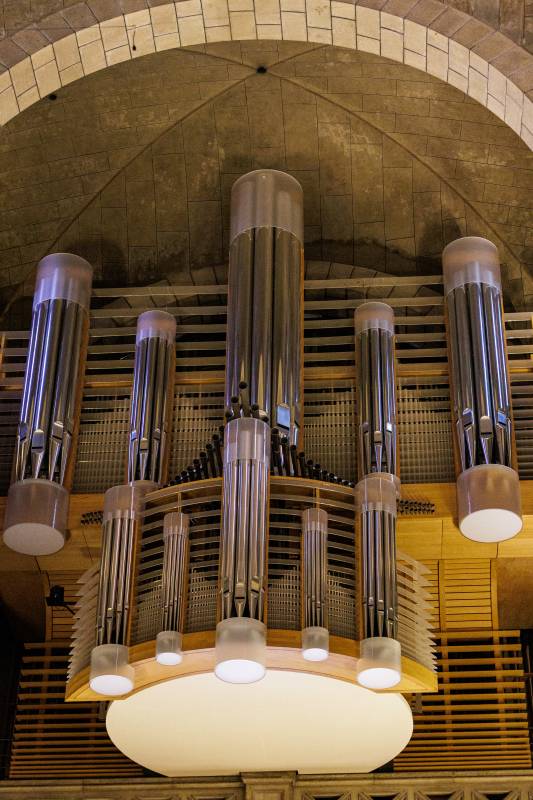
Organ with the spirit of an angel
The organ like the Cathedral itself is a masterful blend of tradition with, in the case of the organ, innovations in technology together with the inspired graceful architecture. This is an organ with “the spirit of an angel” suspended in air — all 20 tons of it, born out of an international competition following the arrival in 2006 of a new organist, Olivier Vernet.
The organ building company “Thomas” was chosen to undertake the challenge with the requirement to use most of the existing pipes and recreate their original voicing, in order to conserve the soul of the former instrument in a new body. In fact, the result is in reality a new organ, with the exception of some pipes that have been meticulously restored (many reeds had previously been chopped too short). The frames, case, windchests, blowers, console, transmissions, and electronic systems are new. The organ builders and architects took a courageous decision to shift the organ from the gallery-alcove where it was previously sited, and to use state of the art LED lighting as a feature in its own right. The organ builders “Thomas” created a strikingly contemporary façade, which makes the most of transparency and light, blending harmoniously with the Cathedral while appearing as an original artistic masterpiece.
The organist can recreate the typical “old feeling” when playing music of earlier centuries. There is also a feature that enables organists to hear their own renditions from the nave. The resulting tone has been likened to that of French classical organ, opening toward the symphonic style.
Some purists are less comfortable with modifying existing instruments, both classic and symphonic. However what matters the most is the resulting sound. Who can deny that the new organ of Monaco is an amazing musical instrument. Olivier Vernet himself wrote: “As a synthesis of the past with the most elaborate contemporary technology, this wonderful instrument, thanks to the huge variety of its tonal palette, is an inexhaustible source of inspiration.”



